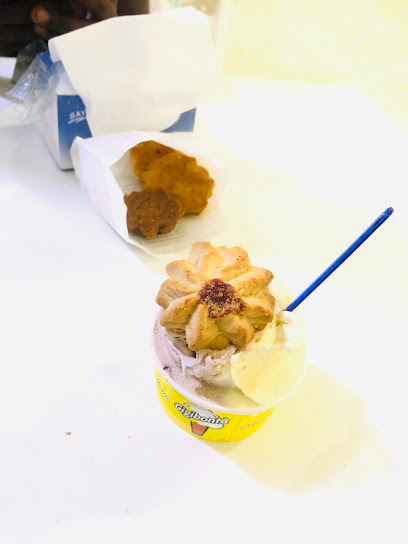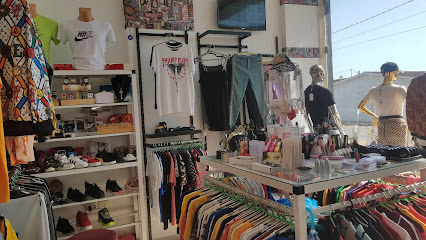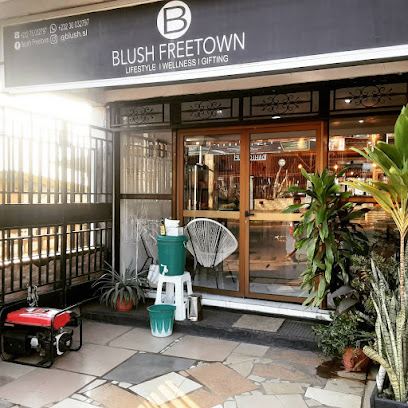
Bunce Island: A Gateway to History and Reflection
Discover Bunce Island in Sierra Leone: A historical site revealing the deep-rooted history of the transatlantic slave trade and a poignant place of reflection and learning.
Bunce Island is a small island located in the Sierra Leone River, about 20 miles upstream from Freetown. It is one of Sierra Leone's most significant historical sites, known for its role in the transatlantic slave trade. Visiting Bunce Island is a profound experience, offering a glimpse into a dark chapter of human history. The island was once a major British slave trading post from the late 17th century to the early 19th century. The ruins of the fort, slave quarters, and watchtowers stand as solemn reminders of the thousands of Africans who were captured and shipped across the Atlantic. These structures, though weathered by time, are powerful symbols of resilience and history. Bunce Island is not just about the past; it is also a place of remembrance and education. Efforts have been made to preserve the site and educate visitors about its significance. The island's serene environment, with its lush greenery and surrounding waters, provides a peaceful contrast to its turbulent history. A visit here is both educational and emotional, making it an essential stop for those interested in history and culture.
Local tips in Bunce Island
- Hire a knowledgeable local guide to gain deeper insights into the island's history.
- Wear comfortable walking shoes, as the terrain can be uneven.
- Bring water and snacks, as there are no facilities on the island.
- Visit during the dry season (November to April) for the best weather conditions.
- Respect the site by not disturbing any ruins or artifacts.
Bunce Island: A Gateway to History and Reflection
Bunce Island is a small island located in the Sierra Leone River, about 20 miles upstream from Freetown. It is one of Sierra Leone's most significant historical sites, known for its role in the transatlantic slave trade. Visiting Bunce Island is a profound experience, offering a glimpse into a dark chapter of human history. The island was once a major British slave trading post from the late 17th century to the early 19th century. The ruins of the fort, slave quarters, and watchtowers stand as solemn reminders of the thousands of Africans who were captured and shipped across the Atlantic. These structures, though weathered by time, are powerful symbols of resilience and history. Bunce Island is not just about the past; it is also a place of remembrance and education. Efforts have been made to preserve the site and educate visitors about its significance. The island's serene environment, with its lush greenery and surrounding waters, provides a peaceful contrast to its turbulent history. A visit here is both educational and emotional, making it an essential stop for those interested in history and culture.
When is the best time to go to Bunce Island?
Essential places to dine
Brimelia Vegetarian Restaurant
Discover the vibrant flavors of vegetarian cuisine at Brimelia Vegetarian Restaurant in Freetown – where health meets taste!

Paul's Beach Bar & Restaurant
Discover Lakka's vibrant culinary scene at Paul's Beach Bar & Restaurant, where fresh seafood meets breathtaking ocean views.

Olive's Garden
Discover authentic Sierra Leonean cuisine at Olive's Garden on Lumley Beach – where delightful flavors meet breathtaking ocean views.

Pulse Resturant and Bar
Experience vibrant dining at Pulse Restaurant and Bar in Freetown - where local flavors meet international cuisine amidst lively entertainment.

Lily's Restaurant & cafe
Experience the best flavors of Sierra Leone at Lily's Restaurant & Cafe along Lumley Beach Road in Freetown.

Summer Times Special (STS)
Discover Summer Times Special: Where Delicious Local Cuisine Meets Breathtaking Beachfront Views in Freetown.

Verola's Kitchen
Discover authentic Sierra Leonean flavors at Verola's Kitchen in Hastings – where every dish tells a story.

Nouveau chez nous
Discover authentic Sierra Leonean flavors at Nouveau chez nous, Freetown's vibrant culinary destination offering warm hospitality.

DeVillage Beach Bar & Restaurant
Experience delightful grilled cuisine at DeVillage Beach Bar & Restaurant on Lumley Beach, where relaxation meets stunning ocean views.

Home Restaurant and Bar
Experience authentic Sierra Leonean cuisine at Home Restaurant and Bar in Freetown – where flavors meet hospitality.

West End palace
Discover culinary bliss at West End Palace on Lumley Beach—where delicious local flavors meet stunning ocean views.

Gigibonta
Discover the flavors of Italy at Gigibonta in Freetown – where authentic cuisine meets local charm.

Freetown The Restaurant at the beach
Discover Freetown The Restaurant at Lumley Beach – where fresh seafood meets stunning ocean views in a relaxed coastal setting.

Cokie's Cookery & Bar
Experience authentic Sierra Leonean cuisine at Cokie's Cookery & Bar in Freetown - where local flavors meet warm hospitality.

ROCK ATM BAR & RESTAURANT
Experience authentic Sierra Leonean cuisine at Rock ATM Bar & Restaurant in Freetown – where vibrant flavors meet warm hospitality.

Markets, malls and hidden boutiques
calaba Town
Discover Calaba Town, Freetown's vibrant clothing hub, where local culture and contemporary style blend seamlessly for an unforgettable shopping experience.

vip Fashion store
Explore the vibrant fashion scene at VIP Fashion Store in Freetown, offering unique styles and quality pieces that capture the spirit of Sierra Leone.

Colisee Boutique
Discover the charm of Sierra Leonean culture at Colisee Boutique, where unique crafts and fashion await every traveler in Freetown.

Vision Boutique
Discover contemporary men's fashion at Vision Boutique in Freetown, where quality meets style for the discerning traveler.

Blush Freetown
Discover unique gifts and artisanal beauty products at Blush Freetown, a charming shop that embodies Sierra Leonean culture and creativity.

Afrique Interbiz & General Merchandise
Discover unique treasures and local culture at Afrique Interbiz, Freetown's premier general store for tourists and locals alike.

HOPE ENTERPRISE
Discover the essence of Sierra Leone at HOPE ENTERPRISE, where local craftsmanship meets vibrant culture in Freetown.

SANTIMUS ENTERPRISE
Explore unique local crafts and authentic souvenirs at Santimus Enterprise, the boutique that captures the spirit of Sierra Leone's artistry.

BIG DROP 2 SISTER'S BOUTIQUE
Explore BIG DROP 2 SISTER'S BOUTIQUE in Freetown for authentic Sierra Leonean crafts and apparel that celebrate the local culture.

Marketplace Shop
Explore the Marketplace Shop in Freetown for a unique selection of organic and health-conscious products that celebrate local culture.

AMB&C ENTERPRISE
Explore AMB&C Enterprise, a vibrant smart shop in Freetown's Kissy area, offering unique gifts that reflect local culture.

Fashion Base
Discover trendy apparel and unique styles at Fashion Base, a vibrant clothing store in Freetown, showcasing local and international fashion.

HAWA&SONS
Discover the unique crafts and vibrant textiles at HAWA&SONS in Freetown, a true reflection of Sierra Leone's rich culture and artistry.

Ibsatu Souvenir Shop
Explore the vibrant culture of Sierra Leone through unique clothing and handcrafted treasures at Ibsatu Souvenir Shop.

Napoli Boutique
Explore Napoli Boutique in Freetown for unique local fashion and handcrafted treasures that embody the spirit of Sierra Leone.

Essential bars & hidden hideouts
Blu Lounge
Experience the tranquil charm of Blu Lounge in Masoila, where relaxation meets local culture in a cozy atmosphere.

Mamz Beach Bar
Relax and unwind at Mamz Beach Bar, where stunning ocean views and a tranquil atmosphere create the perfect getaway in Freetown.

Jomat Bar N Lounge
Discover the vibrant culinary scene at Jomat Bar N Lounge in Freetown, where grilled delicacies meet a lively atmosphere for a unique dining experience.

Abu's Poyo Place
Discover the authentic taste of Lungi-Town at Abu's Poyo Place, where fresh palm wine and local culture converge in a vibrant bar setting.

Honey suckle pub
Experience the vibrant atmosphere and local flavors at Honey Suckle Pub, a popular bar in Aberdeen, Freetown that embodies the spirit of Sierra Leone.

Nigerian restaurant local
Experience authentic Nigerian cuisine in Freetown with vibrant flavors and a warm, inviting atmosphere that celebrates culture and tradition.

Harbor Bar - Moa Sombo - Esther
Experience the vibrant nightlife and stunning coastal views at Harbor Bar, a must-visit destination in Freetown for tourists.

Tito's Bar and Restaurant
Discover the flavors of Sierra Leone at Tito's Bar and Restaurant, a beachfront grill paradise in Freetown offering fresh, local cuisine and stunning ocean views.

M&T Bar
Discover the heart of Freetown at M&T Bar, where local culture, friendly vibes, and refreshing drinks come together for an unforgettable experience.

V roadise
Experience the vibrant nightlife of Freetown at V Roadise, where local culture meets an inviting atmosphere and diverse drink selection.

Bengazi Bar Restaurant
Discover the vibrant Bengazi Bar Restaurant in Freetown, where sports fans unite to enjoy local cuisine and live games in a lively atmosphere.

The Baw Baw Bar
Discover The Baw Baw Bar in Freetown, a vibrant coastal bar offering refreshing drinks and stunning views of Lumley Beach.

Dulman seaview
Experience the vibrant atmosphere and stunning views at Dulman Seaview, a perfect beachfront bar in Freetown, Sierra Leone.

Poyoh Bar
Experience the vibrant nightlife at Poyoh Bar in Freetown, where locals and travelers unite over drinks, music, and unforgettable memories.

BAR
Experience the lively nightlife of Freetown's bar scene, where refreshing drinks and live music create unforgettable memories.

Local Phrases about Bunce Island
-
- HelloYah
[yah] - GoodbyeKushe
[koo-sheh] - YesEh
[eh] - NoAya
[ah-yah] - Please/You're welcomeNya
[nyah] - Thank youTenki
[ten-kee] - Excuse me/SorrySori
[soh-ree] - How are you?How de body?
[how deh boh-dee] - Fine. And you?Fine. An yu?
[feen. ahn yoo] - Do you speak English?Yu sabi speak English?
[yoo sah-bee speak eng-lish] - I don't understandMi no sabi
[mee noh sah-bee]
- HelloYah
-
- I'd like to see the menu, pleaseAh go lek see di menu, abeg
[ah goh lek see dee men-oo, ah-beg] - I don't eat meatAh no de eat meat
[ah noh deh eet meet] - Cheers!Lef yuh
[leh-f yoo] - I would like to pay, pleaseAh go lek pay, abeg
[ah goh lek pay, ah-beg]
- I'd like to see the menu, pleaseAh go lek see di menu, abeg
-
- Help!Hilp!
[hilp!] - Go away!Go comot!
[goh koh-mot!] - Call the Police!Call di Police!
[kahl dee poh-leece!] - Call a doctor!Call dokita!
[kahl doh-kee-tah!] - I'm lostMi loss
[mee loss] - I'm illMi sick
[mee sik]
- Help!Hilp!
-
- I'd like to buy...Ah go lek buy...
[ah goh lek buy...] - I'm just lookingAh de look small
[ah deh look smahl] - How much is it?How much en di price?
[how much en dee price?] - That's too expensiveDa wan too much
[dah wahn tooh much] - Can you lower the price?Yu fit reduce di price?
[yoo fit reh-duce dee price?]
- I'd like to buy...Ah go lek buy...
-
- What time is it?Na which time dis?
[nah which time dees?] - It's one o'clockNa one o'clock
[nah wuhn o'clock] - Half past (10)Half ten
[hah-f ten] - MorningMornin
[morn-in] - AfternoonAftanoon
[af-tah-noon] - EveningEvenin
[ee-ven-in] - YesterdayYeside
[yeh-sideh] - TodayTideh
[tee-deh] - TomorrowTomoro
[toh-moh-roh] - 1Wan
[wahn] - 2Tu
[too] - 3Tri
[tree] - 4Fo
[foh] - 5Fayf
[fayf] - 6Seks
[sehks] - 7Seven
[seh-ven] - 8Eit
[ayt] - 9Nain
[nayn] - 10Ten
[ten]
- What time is it?Na which time dis?
-
- Where's a/the...?Wey di...?
[weh dee...?] - What's the address?Wetin bi di address?
[weh-teen bee dee address?] - Can you show me (on the map)?Yu fit show mi (pan di map)?
[yoo fit show mee (pahn dee map)?] - When's the next (bus)?Wen di nex wan de kam?
[wehn dee nehks wahn deh kahm?] - A ticket (to ....)Wan ticket (go...)
[wahn ticket (goh...)]
- Where's a/the...?Wey di...?
History of Bunce Island
-
Bunce Island, located in the Sierra Leone River, is a small island with a big history. It served as a major slave trading post from the late 17th century to the early 19th century. The island is now a significant historical site, bearing witness to the brutal transatlantic slave trade and its impact on African societies.
-
Bunce Island was first established as a trading post by English merchants in 1670. The island's strategic location made it a prime spot for trade, including the exchange of gold, ivory, and, most tragically, enslaved people. The fort built on Bunce Island became one of the largest British slave castles in West Africa.
-
During its peak, Bunce Island was a central hub in the transatlantic slave trade. Enslaved Africans were held in dark, cramped quarters before being shipped to the Americas, primarily to South Carolina and Georgia. The island played a crucial role in the forced migration of thousands of Africans, leaving a lasting impact on both sides of the Atlantic.
-
Bunce Island changed hands several times over the centuries. Initially controlled by the English, it was later occupied by the French and the Dutch before returning to British control. Each shift in ownership brought changes in the island's operations, though the slave trade remained the primary economic activity until its decline in the early 19th century.
-
The abolition of the transatlantic slave trade in the early 19th century marked a significant turning point for Bunce Island. The British Parliament passed the Abolition Act in 1807, leading to the eventual end of the slave trade from Bunce Island. The island's fort and trading post were gradually abandoned, leaving behind ruins that tell the story of its dark past.
-
Today, Bunce Island is an important archaeological site. Excavations have uncovered numerous artifacts, including shackles, weapons, and everyday items used by both the enslaved and their captors. These discoveries provide valuable insights into the island's history and the lives of those who passed through its gates.
-
Bunce Island is now recognized as a site of cultural heritage and a poignant reminder of the horrors of the slave trade. Efforts have been made to preserve its ruins and educate visitors about its history. The island serves as a place of reflection and remembrance for descendants of enslaved Africans and others who seek to understand this dark chapter in human history.
Bunce Island Essentials
-
Bunce Island is located in the Sierra Leone River, approximately 20 miles upriver from the capital city, Freetown. To get there, you can take a boat tour offered by various operators in Freetown. These tours typically depart from the Aberdeen or Government Wharf areas. It is advisable to book your trip in advance, especially during the peak tourist season, to ensure availability.
-
Once you arrive at Bunce Island, transportation is limited to walking, as the island is small and best explored on foot. Comfortable walking shoes are recommended due to the uneven terrain. For the journey to and from the island, boat tours are the most practical and scenic option, providing a unique perspective of the Sierra Leone River.
-
The official currency of Sierra Leone is the Leone (SLL). While credit cards are increasingly accepted in Freetown, it is advisable to carry cash for transactions, especially when dealing with smaller vendors or paying for boat tours. ATMs are available in Freetown, but it is wise to carry enough cash before heading to Bunce Island.
-
Bunce Island is generally safe for tourists, but it is important to take standard precautions. Avoid carrying large amounts of cash or valuables. Petty theft can occur, so keep an eye on your belongings at all times. Freetown has areas with higher crime rates, such as the eastern parts of the city, so it is recommended to stay in well-known and secure neighborhoods like Aberdeen or Lumley Beach.
-
In case of an emergency, dial 112 for immediate assistance in Sierra Leone. Ensure you have travel insurance that covers medical emergencies. There are limited emergency facilities on Bunce Island, so it is crucial to have a plan for returning to Freetown, where better medical facilities are available. Carry a basic first aid kit and any necessary medications.
-
Fashion: Do dress comfortably and modestly, suitable for tropical weather. Avoid flashy jewelry or expensive items. Religion: Do respect local religious practices. Sierra Leone is predominantly Muslim, with a significant Christian population, so be mindful of religious customs. Public Transport: Do use reputable boat tour operators for travel to Bunce Island. Avoid overcrowded or poorly maintained boats. Greetings: Do greet people warmly; a handshake is common. Use 'Good morning' or 'Good afternoon' as a sign of respect. Eating & Drinking: Do try local foods and beverages, but ensure they are from reputable sources to avoid foodborne illnesses. Don't drink tap water; always opt for bottled water.
-
For an authentic experience, engage with local guides who can provide in-depth historical insights about Bunce Island. They often have rich stories that aren't covered in standard tours. Bring a picnic and enjoy it on the island, but make sure to clean up after yourself to preserve the site's natural beauty. Early morning or late afternoon visits are ideal for avoiding the heat and enjoying the serene environment.
Nearby Cities to Bunce Island
-
Things To Do in Magburaka
-
Things To Do in Conakry
-
Things To Do in Bonthe
-
Things To Do in Pujehun
-
Things To Do in Kenema
-
Things To Do in Faranah
-
Things To Do in Monrovia
-
Things To Do in Voinjama
-
Things To Do in Quebo
-
Things To Do in Kakata
-
Things To Do in Buba
-
Things To Do in Gbarnga
-
Things To Do in Buchanan
-
Things To Do in Bissau
-
Things To Do in Ganta






